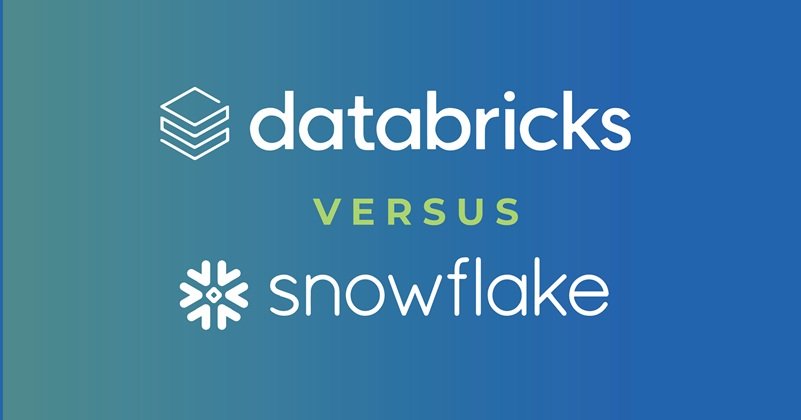The modern data stack is full of powerful tools, and for many teams, two names keep rising to the top: Databricks and Snowflake. Both platforms promise to unlock the value of your data, but they take very different paths to get there.
So, how do you decide between them? It all comes down to use case.
In the debate of Databricks vs Snowflake, it’s not just about which platform is “better.” It’s about which one is the right fit for the job at hand. This breakdown will help you match common data scenarios to the platform that handles them best, so your team can move faster, smarter, and more confidently.
First, a Quick Primer
Before diving into use cases of Databricks vs Snowflake, let’s set the stage with what each platform does best:
● Databricks: A unified analytics platform built around Apache Spark. It’s designed for big data processing, machine learning, and collaborative data science. Think advanced analytics and AI at scale.
● Snowflake: A fully-managed cloud data warehouse focused on fast, secure SQL-based analytics. Known for ease of use, high performance, and support for business intelligence workloads.
Both are cloud-native, scalable, and support multiple data formats, but their architectural design makes them ideal for different kinds of work. It’s best to go to a reliable Databricks consulting services partner and let the experts take charge.
When to Use Databricks
1. Advanced Analytics and Machine Learning
If you’re training machine learning models, running complex data science workflows, or dealing with unstructured data (like images or text), Databricks shines. It provides an interactive notebook environment, supports Python, R, and Scala, and integrates well with popular ML libraries like TensorFlow, PyTorch, and MLflow.
Example Use Case: A retail company predicting customer churn using behavioral data and social media sentiment.
2. Processing Large Volumes of Raw Data
Databricks is optimized for heavy-duty processing. If you’re working with petabytes of log data, sensor data, or event streams and need to clean, transform, and structure them at scale, Databricks excels at.
Example Use Case: A telecom provider analyzes millions of network events daily to detect anomalies.
Real-Time Streaming and ETL Pipelines
Do you need to build real-time pipelines that pull data from Kafka or IoT devices and run transformations on the fly? Databricks’ native support for structured streaming makes it a strong choice.
Example Use Case: A logistics company tracking fleet movement in real time and feeding that data into dashboards and alerting systems.
When to Use Snowflake
1. Business Intelligence and Dashboarding
If your team is focused on analytics, dashboards, and reporting, Snowflake is purpose-built for this. It’s SQL-first, integrates with tools like Power BI, Tableau, and Looker, and delivers fast performance even with large datasets.
Example Use Case: A finance team building monthly revenue dashboards for executive leadership.
2. Simplified Data Warehousing
Snowflake abstracts away many infrastructure concerns. You don’t manage clusters, tune performance, or worry about scaling—it handles everything. This makes it ideal for teams without a heavy DevOps footprint.
Example Use Case: A mid-sized company migrating from legacy on-prem databases to a modern cloud warehouse without adding headcount.
3. Secure Data Sharing Across Teams or Partners
Snowflake’s native data sharing features make it easy to securely share data across business units or with external partners, without creating redundant copies.
Example Use Case: A healthcare provider sharing anonymized patient data with a research organization.
Where Both Can Work—But with a Twist
There are situations where discussing Databricks vs Snowflake, both can technically do the job. Here’s how to think about it in those cases:
● Data Lakehouse Architectures: Both platforms now support lakehouse concepts, which combine a data lake’s flexibility with a warehouse’s structure. Databricks was the first to embrace this, but Snowflake has also made big moves.
● ETL/ELT Workflows: Both can transform data at scale. Choose Databricks for complex, code-heavy transformations and Snowflake for SQL-first workflows with lighter lift.
● Data Governance and Compliance: Snowflake offers robust built-in security features, while Databricks offers fine-grained controls with Unity Catalog. Both are suitable for enterprise needs, though setup and complexity may vary.
Databricks vs Snowflake: Choosing Based on Team Type
● Data Scientists & Engineers: Databricks will likely be preferred for flexibility, code-first workflows, and ML tools.
● Business Analysts & SQL Users: Will feel right at home in Snowflake, thanks to its simplicity and performance for structured queries.
● Hybrid Teams: Some organizations use both—Databricks for engineering and ML, Snowflake for reporting and BI. With proper integration, this can be a powerful combo.
Cost Considerations
Pricing models differ too:
● Databricks uses a compute-based pricing model based on the time clusters are running.
● Snowflake uses credits based on compute usage, with separate storage costs.
Databricks can be more cost-effective for batch processing and long-running jobs. Snowflake’s separation of compute and storage allows you to scale independently, making analytics workloads more efficient with fluctuating demand.
Final Thoughts: It’s Not Either/Or—It’s Use Case First
When comparing Databricks vs Snowflake, don’t ask which is “better.” Ask what you’re trying to achieve.
If your focus is advanced analytics, machine learning, or big data engineering, Databricks is built for you. If your goal is fast, reliable SQL analytics and simplified data warehousing, Snowflake is hard to beat.
Pick the tool that aligns with your use case today, but stay flexible. In a fast-changing data landscape, the best strategy might be building a stack that lets each tool do what it does best.

